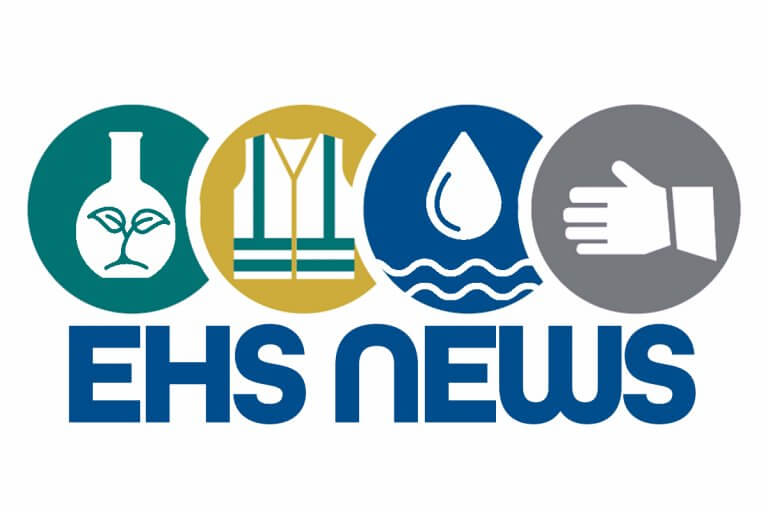
EHS Corner – Noteworthy EHS Regulatory Topics
Hexavalent Chromium Exposure
Health effects of hexavalent chromium exposure are significant and can cause both short-term and long-term damage. The Occupational Safety and Health Administration (OSHA) has established that companies must identify whether exposures exist and comply with the governing regulations found in 29 CFR 1910.1026. Made popular in the feature film Erin Brockovich, adverse health effects of exposure to hexavalent chromium include eye irritation and damage, perforated eardrums, respiratory irritation and cancer, kidney damage, liver damage, pulmonary congestion and edema, upper abdominal pain, nose irritation and damage, and erosion and discoloration of the teeth.
Hexavalent chromium is a focus of OSHA’s National Emphasis Programs (NEPs). The NEPs are used to focus OSHA’s resources on particular hazards and high-hazard industries.
In early November, an aircraft manufacturer in Connecticut faced $308,168 in penalties for failing to identify exposures and protect employees from the dangers of hexavalent chromium and cadmium. Exposure to hexavalent chromium and cadmium can frequently occur in specific industries when fumes or dust are generated from work being performed on stainless steel, chromium, or cadmium metals. This aircraft manufacturer exposed employees to these toxic substances while electroplating, mixing and preparing, and painting and removing paint on small aircraft parts. The findings of the inspection resulted in two willful, four serious, and two other-than-serious violations. OSHA conducted this inspection based on its NEP for hexavalent chromium.
The OSHA inspection at this facility revealed that the aircraft manufacturer failed to:
- Determine employees’ exposure to hexavalent chromium and implement controls and work practices to reduce employees’ overexposure to chromium.
- Assess employees’ overexposure to cadmium during plating operations.
- Provide employees with appropriate personal protective equipment (PPE), including effective respiratory protection, chemical-resistant gloves, and impervious aprons and ensure their use.
- Provide employees with appropriate information and training on chromium hazards.
- Label tanks containing hazardous substances with information on the hazards associated with their contents.
Common exposure and control measures include workplace exposure monitoring, ventilation, spray booths, respiratory protection, medical surveillance programs, and employee training.
Occupational Safety Awareness Through Public Notification of Enforcement Actions
On October 20, 2021, a bill was introduced directing the OSHA to publicize significant occupational safety violations by providing news outlets with the news of the violations. This bill, also known as the Keeping Workers Safe Act, was proposed by House and Senate Democrats in an effort to hold companies accountable for workplace safety.
The Keeping Workers Safe Act would require OSHA’s administrator to publicly disclose violation penalties exceeding $60,000 – or penalties from multiple serious or repeated other-than-serious violations – within 7 days of issuance. The bill would require OSHA to distribute a press release detailing the safety violations to local and regional news outlets, associated trade or industry organizations, applicable labor organizations, and state and local government entities within the employer’s region. A study by Duke University was conducted in June 2020 to determine the effectiveness of OSHA press releases. The study revealed that one press release announced regarding penalties issued to an employee can have the same effect as 210 agency inspections when it comes to future compliance by that employer. The study also showed that the press release resulted in a high percentage reduction of violations in nearby employers within the same industry.
OSHA’s press releases are shown to have a positive effect on offending companies and companies within the same industry made aware of the news. The members of Congress that proposed this bill are hoping this spotlight will ultimately increase awareness for workplace safety by making it known when OSHA utilizes its enforcement power.
US EPA TRI Program Turns 35 and Treats Itself to Expansion Of TRI Coverage
October 2021 marked the 35th anniversary of the US EPA’s Toxics Release Inventory (TRI) program under the Emergency Planning and Community Right-to-Know Act (EPCRA). To celebrate, albeit a month late, the US EPA expanded the scope of the TRI program to cover natural gas processing (NGP) facilities. As published in the Federal Register on November 24, 2021 (https://www.govinfo.gov/content/pkg/FR-2021-11-24/pdf/2021-25646.pdf), the TRI program now covers NGP facilities with North American Industry Classification System (NAICS) code 211130 (Standard Industrial Classification [SIC] code 1321). This expansion now requires all NGP facilities to report where only those NGP facilities which, “… recover sulfur from natural gas and previously classified under SIC 2819, Industrial Inorganic chemicals, Not Elsewhere Classified’’ were already required to report under 40 CFR 372.23(b).
This rule does not add to TRI coverage of natural gas field facilities that only recover condensate from a stream of natural gas, lease separation facilities that separate condensate from natural gas, or natural gas pipeline compressor stations that supply energy to move gas through transmission or distribution lines into storage.
Additional examples of operations that this rule does not add to TRI coverage include Joule-Thompson valves, dew point depression valves, and isolated or standalone Joule-Thompson skids. The industrial operations described in this paragraph often occur at or close to extraction sites and are typically classified under NAICS codes other than 211130 (e.g., NAICS 221210 [Distribution of Natural Gas]) and, thus, are not within the scope of the NAICS code addition. That is, unless they are adjacent or contiguous to previously described NGP facilities.
According to the US EPA, “Collectively, NGP facilities in the U.S. manufacture, process, or otherwise use at least 21 different TRI-listed chemicals, including n-hexane, hydrogen sulfide, toluene, benzene, xylene, and methanol.”
This rule applies for the reporting year beginning January 1, 2022, meaning the first reports are due July 1, 2023.

